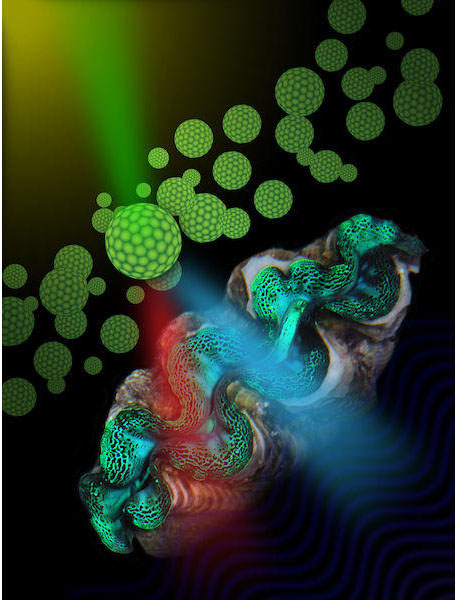Alison Sweeney of the University of Pennsylvania has been studying giant clams. She refer to the clams as “solar transformers” because they are capable of absorbing bright sunlight at a very high rate and scattering it over a large surface area. When the light is distributed evenly among the thick layer of algae living inside the clam, the algae quickly converts the light into energy.Working with Sweeney, the Yang lab devised a method of synthesizing nanoparticles and adding them to an emulsion — a mixture of water, oil, and soapy molecules called surfactants — to form microbeads mimicking the iridocytes, the cells in giant clams responsible for solar transforming.
Mimicking Giant Clams to Enhance the Production of Biofuel
